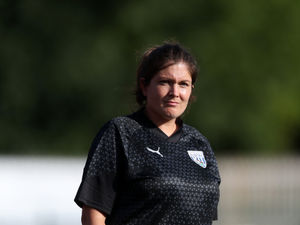Johnny Phillips: Information war being waged by clubs on social media
It did not garner much national attention but one of the most fascinating storylines to come out of last week’s football came from Sheffield United manager Paul Heckingbottom.
The Blades boss revealed that he was ‘pretty sure’ how West Bromwich Albion would set up on Saturday after they ‘put a bit too much on their social media channels for us to see’.
The main clip in question appeared to be three minutes and 47 seconds’ worth of footage from Carlos Corberan’s first training session on the Wednesday, posted on Twitter, three days before the match.
On Friday some photographs were published involving several players in action, while an image of Corberan holding a piece of paper with a team diagram on was also posted. Albion played down Heckingbottom’s comments, but there was clearly some truth in what was said.
In-house media departments are becoming bigger every season and there is a pressure to put out exclusive content ahead of the television broadcasters, with a premium placed on behind-the-scenes access that others don’t have. Albion’s media team did their job well and produced some great footage. It is for other departments at the club to tell them what they can and can’t film.
Many years ago when clubs were more open and allowed reporters and cameramen to wander around their training pitches during sessions it would not be uncommon for a manager to ask for certain parts of training not to be filmed, particularly on Fridays when team selection was being revealed. Certain set-piece routines and shape work was often off limits for cameras, too.
In truth, I sometimes found these requests a bit precious. What could be learnt from Sky showing 10 or so seconds of training footage accompanying an interview which only went out on the channel’s live build-up an hour before kick off?
Times have changed though, and there are more platforms for content to appear on. Heckingbottom is right to point out that there is a whole range of information available now and it is often being published earlier in the week.
Taking the video clip in isolation, some clues were there. It may have looked like a few minutes of uneventful training, but it illustrated which players were fit enough to take part in the first instance. There was some audio from Corberan instructing defensive players as they shuttled from side to side apparently in formation. Three players could be seen in a line at a set-piece. Then there was a section when some players wore bibs and others did not. This can reflect who is in the starting line-up and who is being omitted from the first XI.
These are just the observations of an Express & Star columnist. Professional coaches who actually know far more about training methods, tactics and shape will have observed more subtle visual clues.
“We put a lot of time into it,” Heckingbottom continued. “There might be something seemingly insignificant which goes out, something visual or something that’s said, and it can tell you a lot if you know what you’re looking for.
“There’s someone here who does all of that, looking at stuff and finding things out through it, beforehand.
“If you want to win, if you enjoy what you do, then look at social media. There’s so much information out there and a lot of it is rubbish but if you can find the relevant stuff then it can be really useful.”
Last season Heckingbottom discovered that a key opposition player would be absent from a game because his wife posted on her social media platform that they had gone on holiday. When clubs are spending vast sums of money in the quest for marginal gains it seems a no-brainer to have somebody scouring social media for any available information.
At the end of September Wolves posted a clip of goalkeeper coach Tony Roberts presenting Ruben Neves with his player of the month award. “Congratulations, well done,” said Roberts as he handed over the prize. “Just do it for the next three months, yeah?” Had the club inadvertently revealed that Neves would be off in the January transfer window?
Leaks are fairly common at all levels of the professional game. Lower down the leagues, training grounds are not fortified to the standards of Premier League clubs and eager supporters can often wander through the premises at certain times in the knowledge they will see hints about the following day’s first team or see an injured player receiving treatment.
Higher up the leagues, behind security gates, it is usually only club employees who will have access to the first team pitches. Groundstaff, kitmen and maintenance workers will see what the rest of us don’t.
Of course, this week’s developments could spark a counter-espionage operation. Who is to say opposition teams will not be putting out misleading information in the future? Heckingbottom himself admitted that his own media team occasionally publishes clips designed to carry opponents off the scent.
The bibs in a Friday session are usually the giveaway for team selection the next day. They would be the most obvious to mix-up for the benefit of any in-house media slight of hand.
What about some imaginative team formations, though? Would lining up in a 2-1-5-2 formation fool any social media spies? And the potential for some wacky set-piece routines is boundless. Daniel Podence man-marking Max Kilman at a far post corner, anyone?
Here’s hoping Heckingbottom’s revelation will be the catalyst for football’s very own counter-intelligence war.





